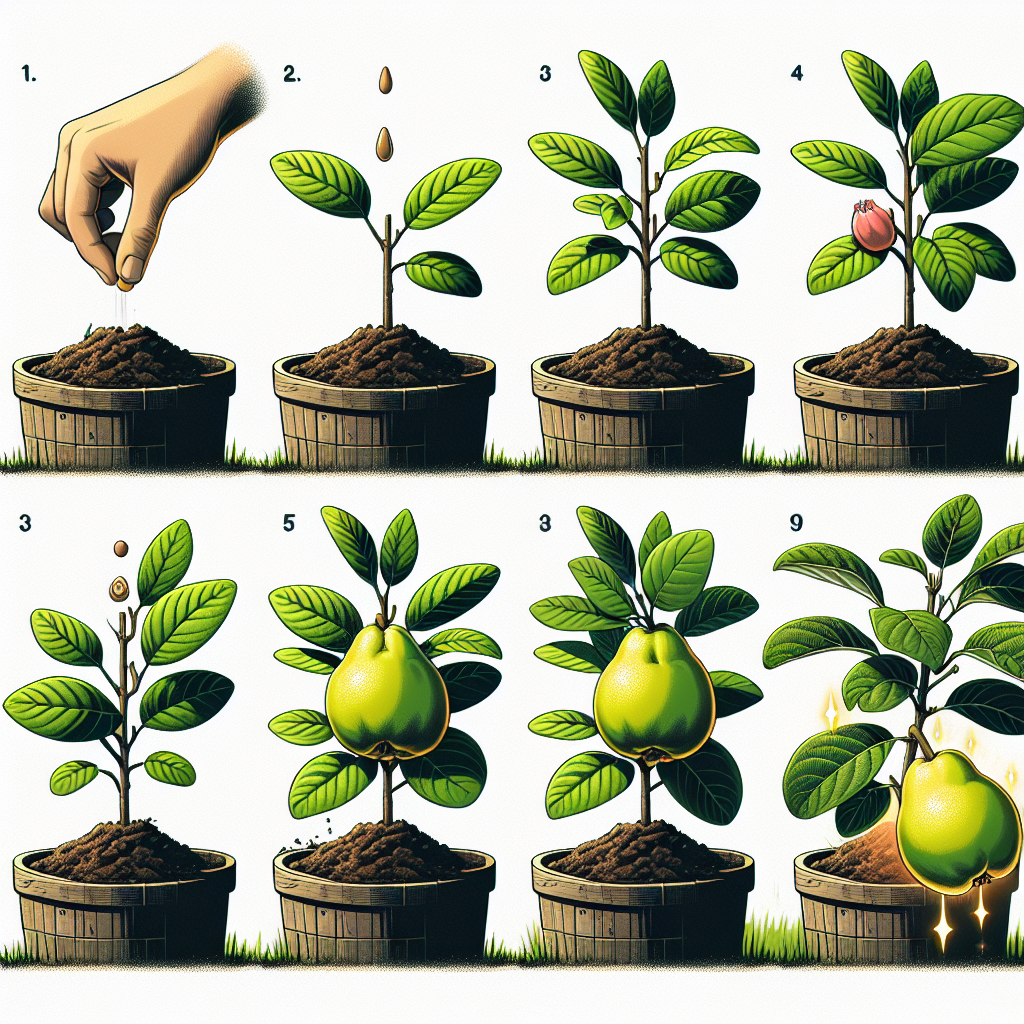Growing Quince at Home: A Step-by-Step Guide
Quince, known scientifically as Cydonia oblonga, is a unique fruit that has been grown and cultivated for centuries. Native to the Middle East and Southwest Asia, quince is a member of the Rosaceae family, which also includes apples and pears. With its fragrant aroma and distinctive taste, quince is becoming increasingly popular among home gardeners. In this article, we will provide you with a step-by-step guide to growing quince at home.
Choosing the Right Variety
The first step in growing quince at home is selecting the right variety. There are several different types of quince available, each with its own unique characteristics. Some popular varieties include ‘Champion,’ ‘Pineapple,’ ‘Smyrna,’ and ‘Orange.’ Consider factors such as the climate in your area and your personal taste preferences when choosing a variety.
Selecting an Appropriate Site
Quince trees thrive in full sun conditions, so it’s important to choose a location in your garden that receives at least 6-8 hours of direct sunlight each day. The soil should be well-drained and fertile, with a pH level between 6.0 and 7.0. If your soil is clayey or sandy, amend it with organic matter like compost or well-rotted manure to improve its texture and fertility.
Preparing the Soil
Before planting your quince tree, it’s essential to prepare the soil adequately. Start by removing any weeds or grass from the chosen site. Loosen the soil using a garden fork or tiller to improve drainage and root penetration. Incorporate organic matter like compost or aged manure into the soil to enhance its nutrient content.
Planting Quince Trees
Quinces are typically grafted onto rootstocks for better disease resistance and improved productivity. Purchase grafted trees from reputable nurseries or garden centers. Dig a hole that is wide and deep enough to accommodate the root system of the sapling. Place the tree in the hole, making sure the bud union (the swollen area where the grafted portion meets the rootstock) is at least 2-3 inches above the soil level. Fill the hole with soil, gently firming it around the roots.

Watering and Fertilizing
After planting, water your quince tree thoroughly to settle the soil and help establish its root system. For the first year, water deeply once a week, ensuring that the soil remains consistently moist but not waterlogged. After the first year, reduce watering frequency to every 10-14 days during dry spells. Fertilize your quince tree in early spring before new growth appears using a balanced fruit tree fertilizer according to package instructions.
Pruning and Training
Quince trees require regular pruning to maintain their health and shape. Prune your tree during late winter or early spring while it is still dormant. Remove any dead or diseased branches, as well as any weak or crossing branches that may impede airflow within the canopy. Train your quince tree into an open center shape by removing any upward-growing branches and encouraging outward growth.
Dealing with Pests and Diseases
Quinces are generally resistant to most pests and diseases. However, they can sometimes suffer from aphid infestations, powdery mildew, or fire blight. Regularly inspect your quince tree for any signs of pests or diseases and take appropriate measures if necessary. You can use insecticidal soap for aphids and sulfur-based fungicides for powdery mildew.
Harvesting Quinces
Quinces are typically harvested when they turn from green to yellowish-golden color. They should yield slightly when gently pressed but remain firm overall. Twist or cut them off from their stems carefully to avoid damaging the fruit or branch. Quinces are quite hard when harvested but soften and develop their characteristic aroma and flavor when stored for a few weeks in a cool, dark place.
In conclusion, growing quince at home can be a rewarding experience. By following these step-by-step guidelines, you can successfully cultivate your own quince tree and enjoy its delicious fruits. Remember to choose the right variety, prepare the soil adequately, provide proper care throughout the growing season, and handle any potential pests or diseases promptly. With patience and dedication, you’ll soon be able to savor the unique taste of homegrown quinces.













